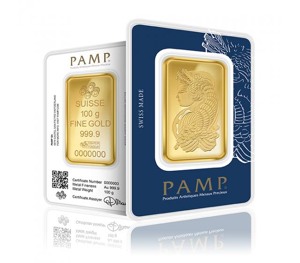Tavex uses cookies to ensure website functionality and improve your user experience. Collecting data from cookies helps us provide the best experience for you, keeps your account secure and allows us to personalise advert content. You can find out more in our cookie policy.
Please select what cookies you allow us to use
Cookies are small files of letters and digits downloaded and saved on your computer or another device (for instance, a mobile phone, a tablet) and saved in your browser while you visit a website. They can be used to track the pages you visit on the website, save the information you enter or remember your preferences such as language settings as long as you’re browsing the website.
| Cookie name | Cookie description | Cookie duration |
|---|---|---|
| tavex_cookie_consent | Stores cookie consent options selected | 60 weeks |
| tavex_customer | Tavex customer ID | 30 days |
| wp-wpml_current_language | Stores selected language | 1 day |
| AWSALB | AWS ALB sticky session cookie | 6 days |
| AWSALBCORS | AWS ALB sticky session cookie | 6 days |
| NO_CACHE | Used to disable page caching | 1 day |
| PHPSESSID | Identifier for PHP session | Session |
| latest_news | Helps to keep notifications relevant by storing the latest news shown | 29 days |
| latest_news_flash | Helps to keep notifications relevant by storing the latest news shown | 29 days |
| tavex_recently_viewed_products | List of recently viewed products | 1 day |
| tavex_compare_amount | Number of items in product comparison view | 1 day |
| Cookie name | Cookie description | Cookie duration |
|---|---|---|
| chart-widget-tab-*-*-* | Remembers last chart options (i.e currency, time period, etc) | 29 days |
| archive_layout | Stores selected product layout on category pages | 1 day |
| Cookie name | Cookie description | Cookie duration |
|---|---|---|
| cartstack.com-* | Used for tracking abandoned shopping carts | 1 year |
| _omappvp | Used by OptinMonster for determining new vs. returning visitors. Expires in 11 years | 11 years |
| _omappvs | Used by OptinMonster for determining when a new visitor becomes a returning visitor | Session |
| om* | Used by OptinMonster to track interactions with campaigns | Persistent |
| Cookie name | Cookie description | Cookie duration |
|---|---|---|
| _ga | Used to distinguish users | 2 years |
| _gid | Used to distinguish users | 24 hours |
| _ga_* | Used to persist session state | 2 years |
| _gac_* | Contains campaign related information | 90 days |
| _gat_gtag_* | Used to throttle request rate | 1 minute |
| _fbc | Facebook advertisement cookie | 2 years |
| _fbp | Facebook cookie for distinguishing unique users | 2 years |
The Gold-Silver Ratio Explained

At the time of writing this article the Gold – Silver Ratio was 88:1. This means it would take 88 ounces of silver to buy one ounce of gold.
In the world of precious metals, the Gold-Silver ratio is a topic that often piques the interest of investors and enthusiasts alike. It’s a fundamental concept that can provide valuable insights into market trends and economic conditions.
In this article, we will delve deep into the Gold-Silver ratio, exploring its significance, calculation, historical context, and its implications for both investors and the broader economy.
Understanding the Gold-Silver Ratio

What is the Gold-Silver Ratio?
The Gold-Silver ratio is a simple yet powerful metric that represents the relative value of gold and silver. It tells us how many ounces of silver are required to purchase one ounce of gold at a given point in time. This ratio can fluctuate over time, reflecting changes in the supply and demand dynamics of these precious metals.
How is it Calculated?
To calculate the Gold-Silver ratio, you simply divide the current price of gold by the current price of silver
For example, if gold is trading at $1,500 per ounce, and silver is trading at $15 per ounce, the ratio would be 100:1 (1,500 / 15 = 100). This ratio is constantly fluctuating based on real time spot market prices.
Historical Context

The Gold-Silver Ratio Throughout History
Throughout history, the Gold-Silver ratio has held significant importance. In ancient civilisations, both gold and silver were used as currency, and their ratio often played a crucial role in economic decisions.
During the Roman Empire, this ratio was fixed at 12:1, and it has experienced various fluctuations since then.
The Gold Rush Era
During the Gold Rush era in the United States, the ratio was around 16:1, as vast quantities of gold were being discovered. This period saw silver becoming relatively scarcer in comparison.
Implications for Investors

Investment Strategies
The Gold-Silver ratio can be a valuable tool for investors. When the ratio is high, it may indicate that silver is undervalued compared to gold, presenting a buying opportunity for silver enthusiasts.
Conversely, a low ratio may suggest that silver is overvalued in comparison to gold. This could lead to more investing in gold as a bullion product, such as physical gold bars or gold coins.
Economic Indicators
The ratio can also serve as an economic indicator.
A rising ratio may signal economic uncertainty, as investors flock to the safe haven of gold
Conversely, a falling ratio may suggest optimism in the economy, as silver is often used in industrial applications. This can indicate the right period of time to buy gold or buy silver.
Key Takeaways
In summary, the Gold-Silver ratio, currently at 88:1, signifies the ounces of silver required to purchase one ounce of gold. This article has explored its importance, calculation, historical relevance, and investment implications.
The ratio serves as a valuable guide for investors, indicating opportunities when high and prompting considerations for gold or silver investments. Additionally, it acts as an economic indicator, rising during uncertain times and falling in optimistic periods.
The bottom line is that understanding the Gold-Silver ratio is a valuable asset for informed investment decisions, providing insights into precious metal dynamics. So, whether you’re a novice or a pro, stay tuned to this metric for wise investment choices in the ever-changing world of finance.



















